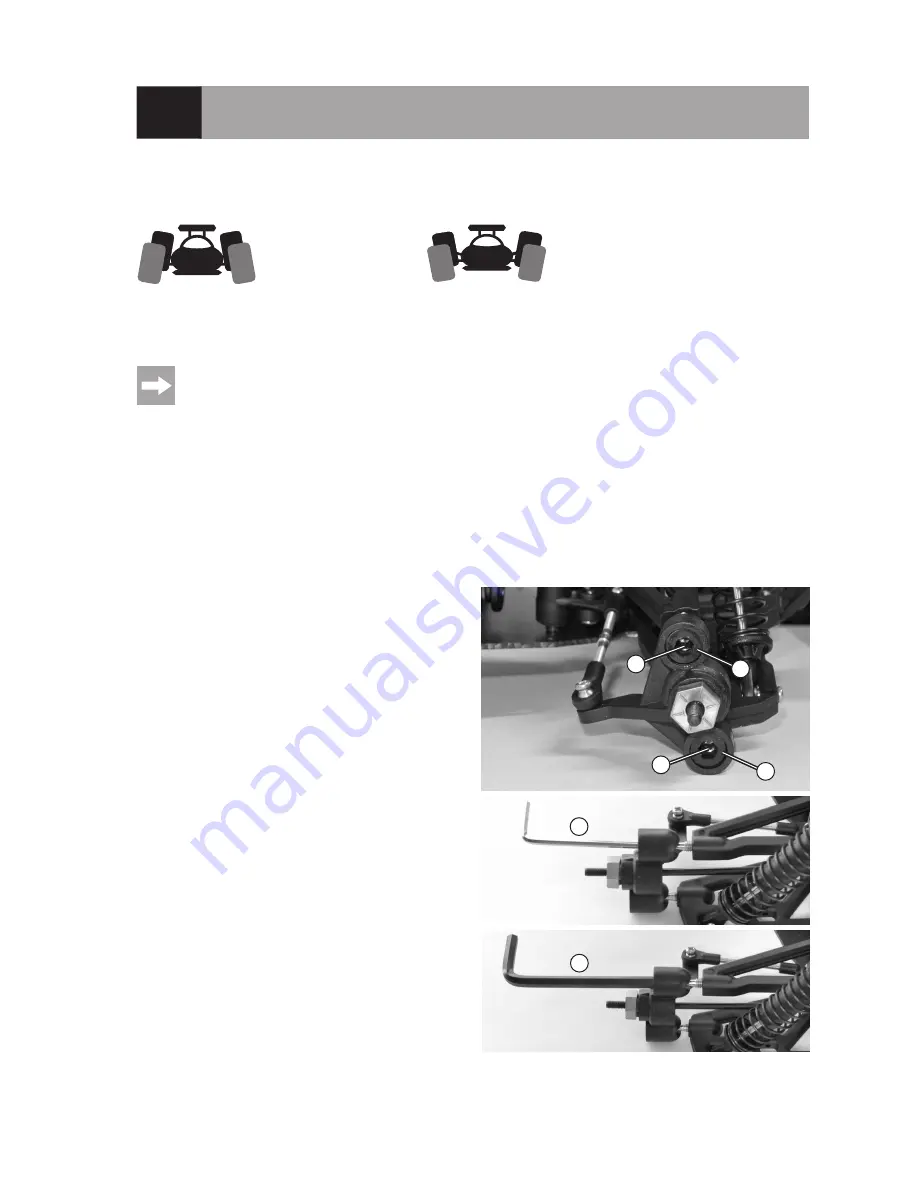
52
11. Adjustment Possibilities for the Model Car
a) Setting the Camber
The camber is the inclination of the wheel level as viewed from the front (vertical).
Negative inclination
Positive inclination
(Top wheel edge points inwards)
(Top wheel edge points outwards)
The setting of the wheel is exaggerated in the two figures in order to make the difference between negative
and positive cambers more obvious. The setting on the model vehicle should of course not be as extreme
as shown!
• A negative inclination of the front wheels increases the lateral cornering powers of the wheel when driving through
bends, the steering reacts more directly and steering forces are reduced. At the same time, the wheel is pushed
onto the axle spur in the direction of the axle. This balances out axial bearing clearance, the driving behaviour is
calmer.
• A negative inclination on the rear wheels reduces the tendency of the rear of the vehicle to swerve in bends.
• Setting a positive camber on the other hand reduces the cornering force of the wheels and should not be used.
Setting Front Axle Camber:
The „pivot ball“ suspension at the front axis comprises of a
specially shaped axis leg, two ball-head screws (A and B)
and two outer plastic grub screws (C).
To set the wheel camber, the ball-head screws (A) and (B)
are twisted via a small hexagon wrench (D) that is pushed
through the hole of the grub screw (C).
The plastic grub screws (C) can be tightened or loosened
with a slightly larger hexagon wrench (E). However, they
only serve to fasten the axis stub to the ball-head screws
(A) and (B).
Never tighten the grub screws (C) by force. Otherwise, the
wheel suspension cannot move freely. The grub screws
(C) also must not be turned in too loosely, or the axis stub
will wobble.
A
B
C
C
D
E
Summary of Contents for Dune Fighter
Page 122: ...122 ...
Page 123: ...123 ...
















































